Antihistamine For Dogs: Overview of Overall Allergy and Treatment

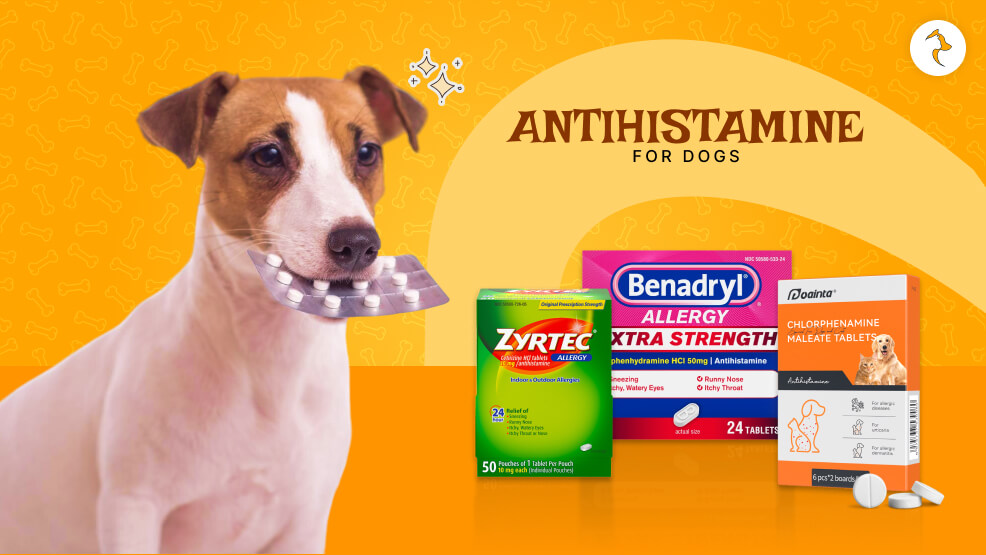
Just like humans, dogs are also subject to allergic attacks for all sorts of reasons, ranging from outer causes to insects and bites and food allergies.
Whenever all sorts of allergic attacks happen, they are unacceptable to your pet. They start scratching, swelling up, rashes develop on them, and they suffer agonizing symptoms.
In general, antihistamines are given as an antidote to such an allergy attack, except for a few. But what are antihistamines, how do they act upon dogs, and how do they administer the best possible effect?
All the above in this guidebook will talk about it and even more so that you can make the best possible decisions in the case of antihistamine administration on your dog.
What Are Antihistamines
Antihistamines are drugs that counteract the actions of allergies by rendering histamines incapable of doing so. Histamines are substances the body’s immune system releases when exposed to an allergen.
Histamines lead to swelling and body immunity reactions. The moment histamines attach to skin, eye, respiratory tract, and other parts of the body receptors, they induce itching, inflammation, sneezing, nasal congestion, and runny eyes.
In the dog, antihistamines are administered to reverse the action of histamine and thus prevent the allergic reaction.
Antihistamines, while in most cases being employed with the comfort of mild to moderate allergy, are not a treatment of an allergy but an over-the-counter drug that wipes out the indication of allergy.
Commonly Occurring Allergies in Dogs
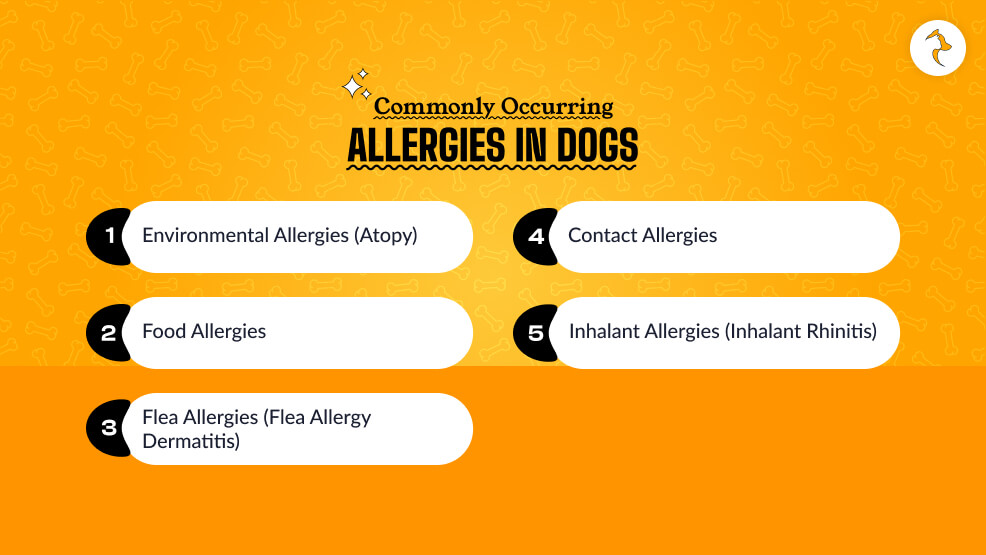
Before discussing antihistamines, let us discuss what type of allergy your dog could have. Allergies in canines are usually classified into several categories:
1. Environmental Allergies (Atopy)
Environmental allergies are caused by the contact of air-borne allergens such as pollen, dust mites, mold spores, and pet dander.
The allergens cause a regular immune system response in the dog but lead to ear infection symptoms, such as itch, sneeze, and teary eyes.
Environmental allergies occur during spring and autumn when pollens are thicker but can occur at any time of the year based on how sensitive the dog is.
2. Food Allergies
Food allergy is a disorder of the immune system in which the dog’s immune system mounts an artificial response to proteins or other food components. They are most frequently beef, chicken, milk, wheat, soy, and corn.
The clinical presentation of food allergy is gastrointestinal disease with vomiting, diarrhea, and abdominal pain and cutaneous disease with pruritus, rashes, and otitis.
3. Flea Allergies (Flea Allergy Dermatitis)
They are also allergy flea saliva dogs. Flea saliva penetrates the dog skin when biting and leads to allergy.
Flea allergy dermatitis (FAD) leads to severe itching, hair loss, and infestation of flea bites in dog skin. Fleas are among the most common causes of dog allergy, especially during summers.
4. Contact Allergies
Contact allergy is triggers following a dog’s exposure to an object, chemicals, detergent, or a product. It entails local irritation, rashes, and reddening.
Contact allergy is hard to diagnose since it involves exposure to something the dog has been exposed to in the environment.
5. Inhalant Allergies (Inhalant Rhinitis)
Similar to human beings, dogs can develop an inhalant allergy to grasses, pollens, and other usual respiratory culprits.
These allergies are time-dependent and will attack some portion of the year. Sneezing, watery eyes, rhinorrhea, and cough are indicators of inhalant allergy.
Antihistamines are the body’s histamine receptor blockers. When histamines releases during an allergy attack, they fill up some of these receptors, i.e., H1 receptors, and cause inflammation, swelling, etc., as some of the symptoms of allergy.
Antihistamines block the effect of histamines in binding to such receptors and thus prevent or reduce the allergic effect.
Antihistamines using for relieving the following symptoms:
- Itching or Pruritus: Antihistamines will stop histamine from attaching to receptors, fewer scratchings and itchings.
- Redness and Swelling: Antihistamines will stop swelling during the allergy, fewer redness and swellings.
- Rhinitis: In case your pet has allergy in the nose, antihistamines will stop sneezing and runny nose.
- Ear Infections: Ear infections will certainly occur because of allergies. Antihistamines will reduce the occurrence of ear infections during withdrawal of allergic effects.
Other Therapeutic Effects of Antihistamines in Dogs
- Sedative Effect: Benadryl (Diphenhydramine) is a sedative that can be employed to calm nervous and fussy dogs due to allergies.
- Low Cost: Antihistamines are, to a certain extent, low-cost management of allergies, especially in contrast to the cost of treatments like corticosteroids or allergy shots.
- Light Side Effects: Antihistamines have declining side effects compared to other allergy medications and are thus less objectionable to administer long-term.
Types of Antihistamines Safe for Dogs
While all antihistamines used in human patients are administering in the dog patient with no negative effects, some are not tolerated.
It is very important to consult your veterinarian before giving any medication to your dog because its misuse will produce side effects.
1. Benadryl (Diphenhydramine)
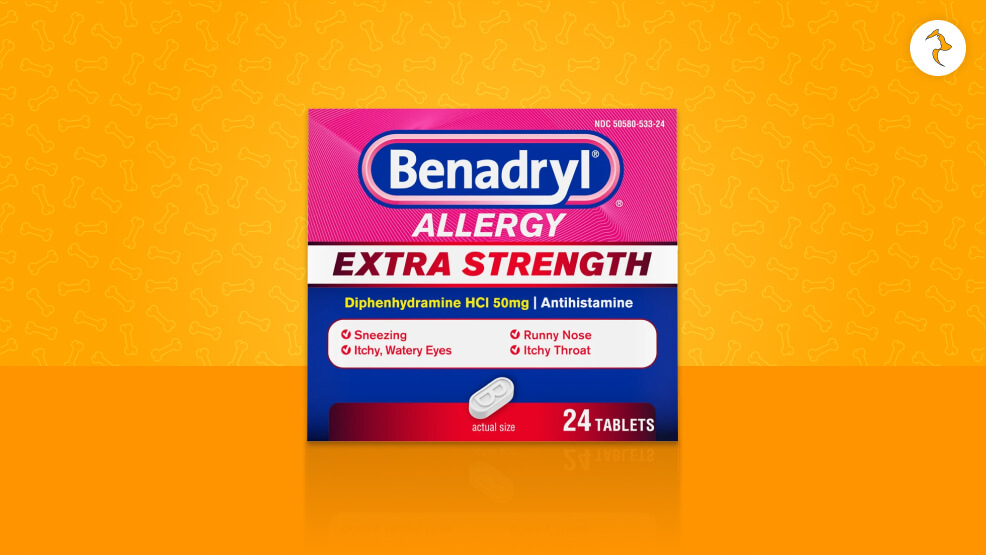
They also usually administers antihistamines to dogs. Benadryl is a great one to keep in your first aid kit when your dog becomes allergic to something such as bug bites and skin allergies. It even prevents motion sickness.
It will also soothe distressed dogs because the way Benadryl functions is that it’s a sedative. Dosage is 1 mg body weight, and 8 hours apart is how often. Obtain proper dosage from vet.
2. Zyrtec (Cetirizine)
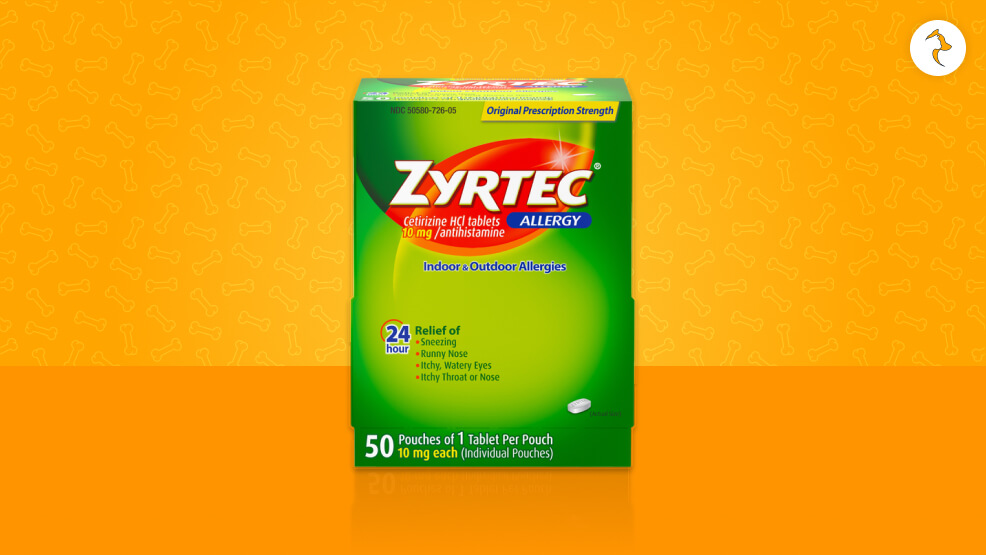
Zyrtec is a nonsedating antihistamine and, therefore, less likely to sedate dogs than Benadryl.
It is used for year-round and seasonal allergy symptoms and skin sensitivity. The dose is generally 0.5 mg per body pound daily.
3. Claritin (Loratadine)
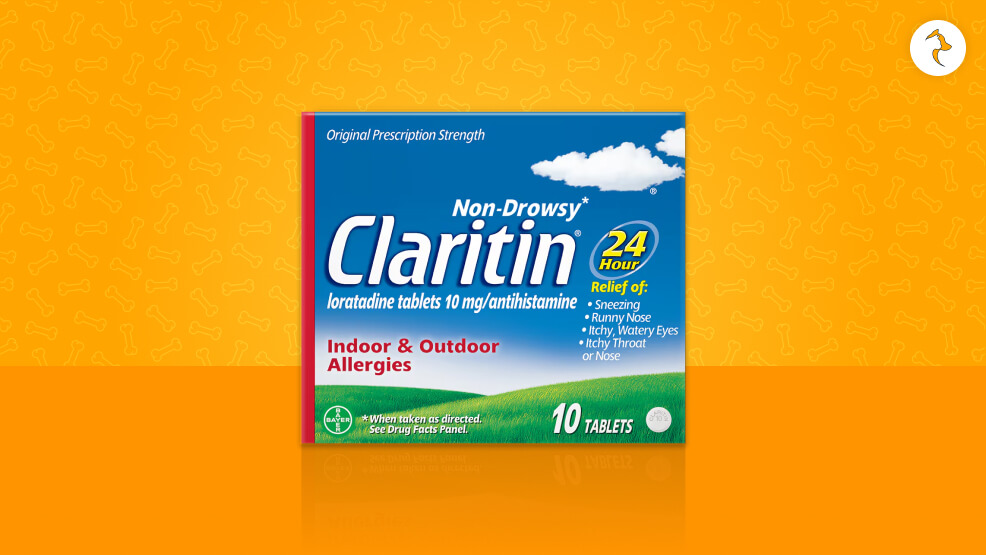
Claritin, a non-sedative antihistamine, is used similarly to control dog seasonal and environmental allergies. It uses for pruritus and other allergic diseases. The dosage is 0.1 mg/lb body weight daily.
4. Chlorpheniramine
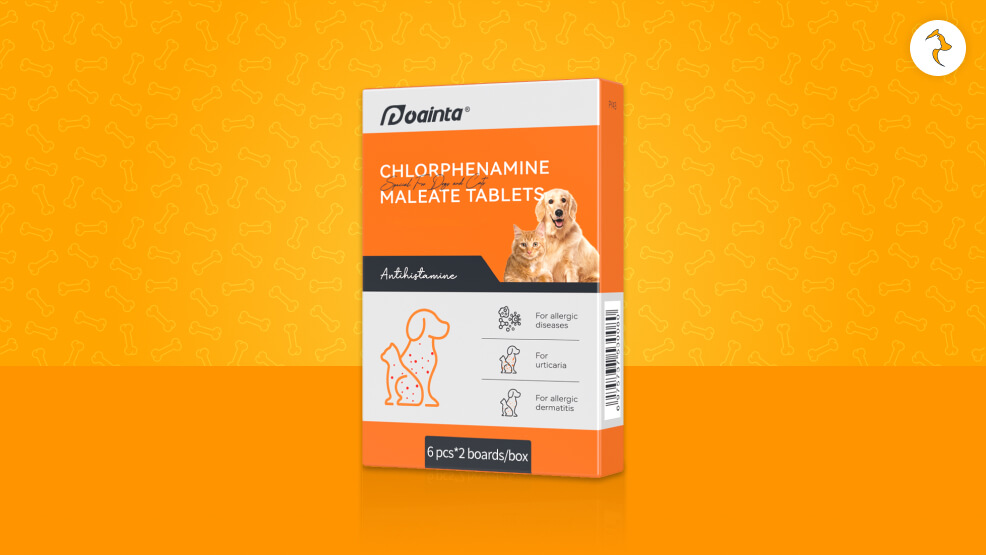
Chlorpheniramine in acute allergic disease, also in most environmental allergic dogs. Dosage usually 0.4 mg/lb body weight. Also in pruritus, sneezing, and other dog allergic symptomatology.
5. Tavist (Acrivastine)
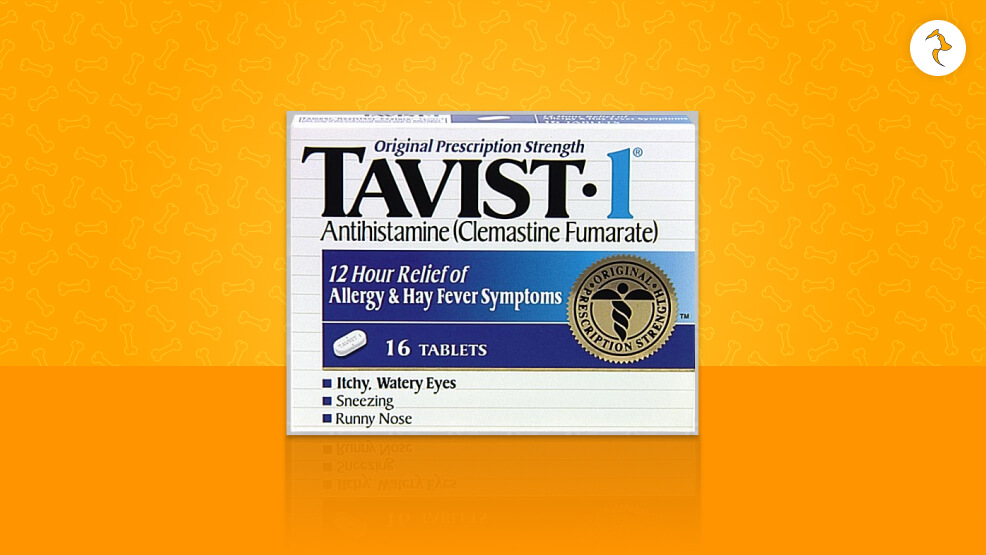
Tavist is a mild sedating antihistamine. It is routinely utilized for dog pruritus or allergic rhinitis. The recommendation dosage is typically 0.25 mg per pound of body weight.
Using Antihistamines on Dogs
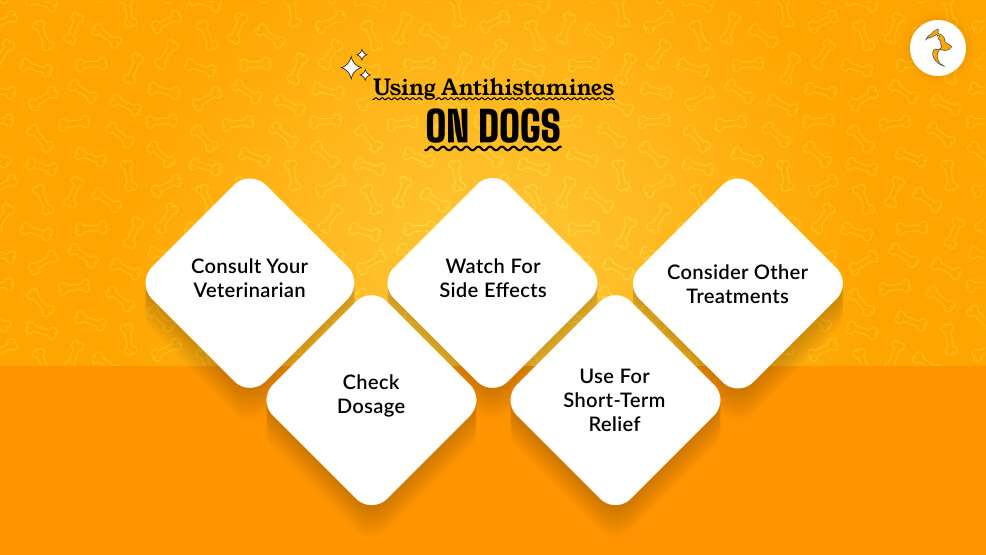
If the vet has given your dog an antihistamine, use it safely and appropriately. The following are the most crucial things to do:
1. Consult Your Veterinarian
You should consult your vet before administering any antihistamine drug to your dog. Your vet will guide your dog through the best antihistamine based on its individual needs, allergies, and overall health.
2. Check Dosage
Your dog’s age, weight, and size will all play a role in determining the correct dosage. Administer the indicated dose and never exceed the recommended amount.
Too much antihistamine given will cause drowsiness, indigestion, or even symptoms of an overdose.
3. Watch For Side Effects
Once you’ve given your dog an antihistamine, observe for the response. Among the adverse effects are thirst, dry mouth, drowsiness, and mild stomach disturbance.
If you do notice the hyperactive side effects of shortness of breath, vomiting, and swelling, stop immediately and talk to your vet.
4. Use for Short-Term Relief
Antihistamines utilize primarily to manage mild and moderate allergic attacks but cannot be blamed for eliminating allergies.
They must be used short-term and in compound drug doses as and when needed. Your veterinarian will suggest other treatment options, like allergy tests, immunotherapy, or steroids, in case of repeated or severe allergies in your pet.
5. Consider Other Treatments
In some cases, antihistamines won’t control the dog’s allergy. Under this condition, the doctor may suggest the following other drugs:
- Topically apply spray or cream so that there would be prevention against scratching and dermatitis.
- Flea preventives in the case of flea allergy.
- Restrict diet for food allergy.
- Prevention from allergic reaction: Through allergy shot or immunotherapy for treating an existing allergy. Antihistamines, though safe to administer to a dog in the first place, will be producing side effects. Some of the less objectionable side effects include:
- Sedation: Some antihistamines, like Benadryl, will quiet-sedate a dog or knock it out. That is okay except for a nervous dog that needs to treat for the allergy but cannot sedate naturally.
- Dry Mouth: Dry mouth is brought about by antihistamines, and that will cause thirst or slobbering.
- Gastrointestinal Disturbance: Vomiting, loss of appetite, or diarrhea can be caused in a few dogs.
- Urinary Retention: Straining to urinate, in mature dogs, is brought about by antihistamines. Should the dog tolerate any of these side effects, it will need to adjust the dose or discontinue the antihistamine and report to your veterinarian.
Do Right by Your Pup!
Antihistamines are great and natural medication which is best to treat allergy in dog. It causes symptoms like itching, sneezing, and dermatitis which are highly likely to be caused after an allergy.
Antihistamines must prescribe by a veterinarian so that the medicine doesn’t expire and kill your dog. Antihistamines are a great temporary solution if your dog is allergic, hence making it comfortable until the day you have come up with methods of curing allergies once and for all.









Leave A Comment